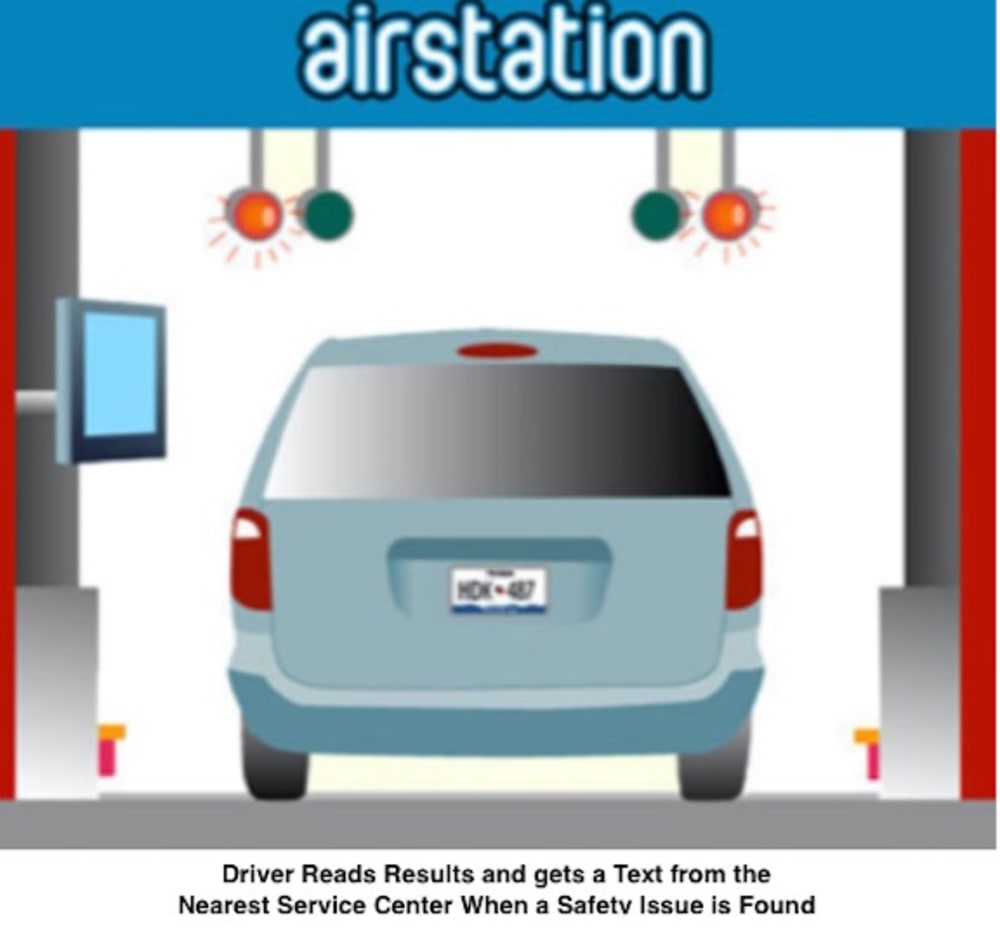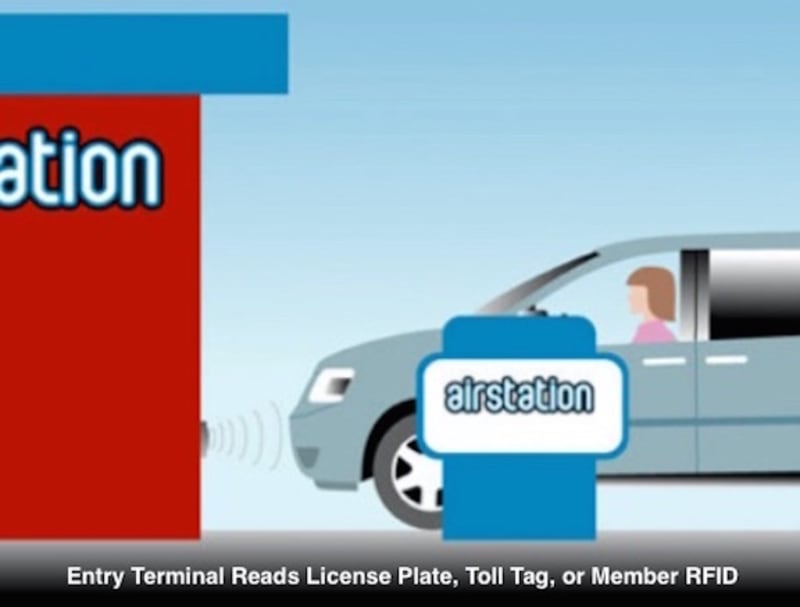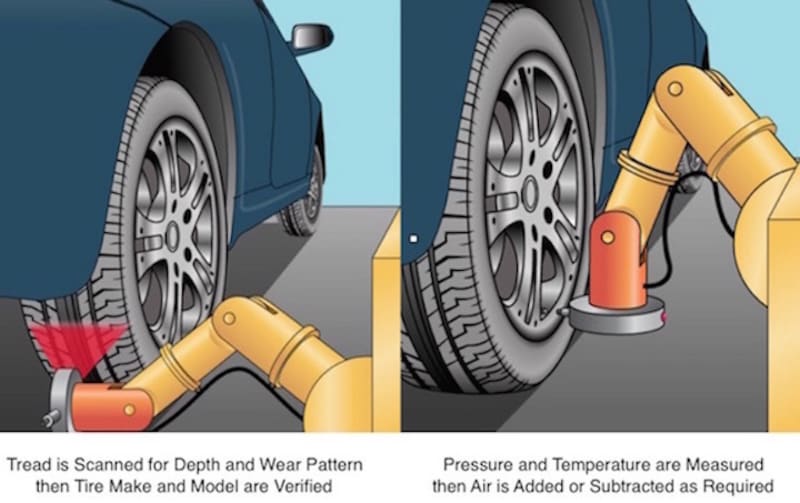The Problem: Under-Inflated Tires
Tire failure
The International Tire and Rubber Association reported to the National Highway Traffic Administration (NHTSA) that under-inflation was the “single most common” factor in tire failure.
A definitive study by NHTSA showed that in the US 27% of cars and 32% of light trucks had one or more tires under-inflated by 8 psi or more. NHTSA also reports that tire problems result in 660 fatalities and 33,000 injuries each year.
Economy: The US Department of Energy says that drivers can improve their mileage by up to 3.3 percent by keeping their tires properly inflated. A DOE economist on fuel economy estimated that under-inflated tires waste 1.2 billion gallons of fuel annually ($4.8 billion at $4 gasoline).
Goodyear submitted data to NHTSA that indicated at 25% under-inflation (the current threshold for TPMS sensors), tire life is reduced by over 13%.
The Solution: Use robotics to create an automated drive-through system. Airstations would allow enrolled drivers to pull into a drive-through bay, have their vehicle recognized (via RFID, Toll Tag or license plate), follow the prompts, have their tires inflated to the correct temperature-adjusted pressure and treads scanned for wear.
The driver would see the results on a display screen. Also, if any potential safety issues (e.g., low pressure in only one tire or excessive tread wear) were detected, the system would display the issue and text the driver directing him to the service center.
Market and Logistics:
Market opportunities stem from current big box retailers that sell tires, such as Walmart and Costco who have the facilities and scale to benefit from Airstation installations.
These companies could provide Airstation service as a branded benefit to their customers either for free or for a nominal charge. The tire retailer would gain market share by having the first opportunity to sell a set of tires when the Airstation detected worn treads (NHTSA found that 9% of vehicles surveyed had at least one bald tire). For non-customers, tie-ins to Toll Tag systems could provide billed Airstation service for the occasional user. The data gathered by a nationwide network of Airstations, detailing tire wear and customer habits, would provide unique market and technical data to tire retailers and producers.
How it Works:
Recent advances in robotics and computer vision make this development a relatively straightforward engineering exercise. The most difficult robot task will be to replace the valve stem cap after service. A potential solution has been identified.
Two or four mobile bots would service tires by using the following tools and equipment:
Arm - lighted camera, cap fingers, air chuck, temperature sensor, tread scanner.
Body - air valves, pressure gauge, and communication link.
Bottom Line:
While financial savings and added convenience are desirable, the major benefit of the system would be to increase safety. Airstation users would be much less likely to be killed or injured by a failed tire.
Like this entry?
-
About the Entrant
- Name:George Carter
- Type of entry:individual
- Patent status:none








